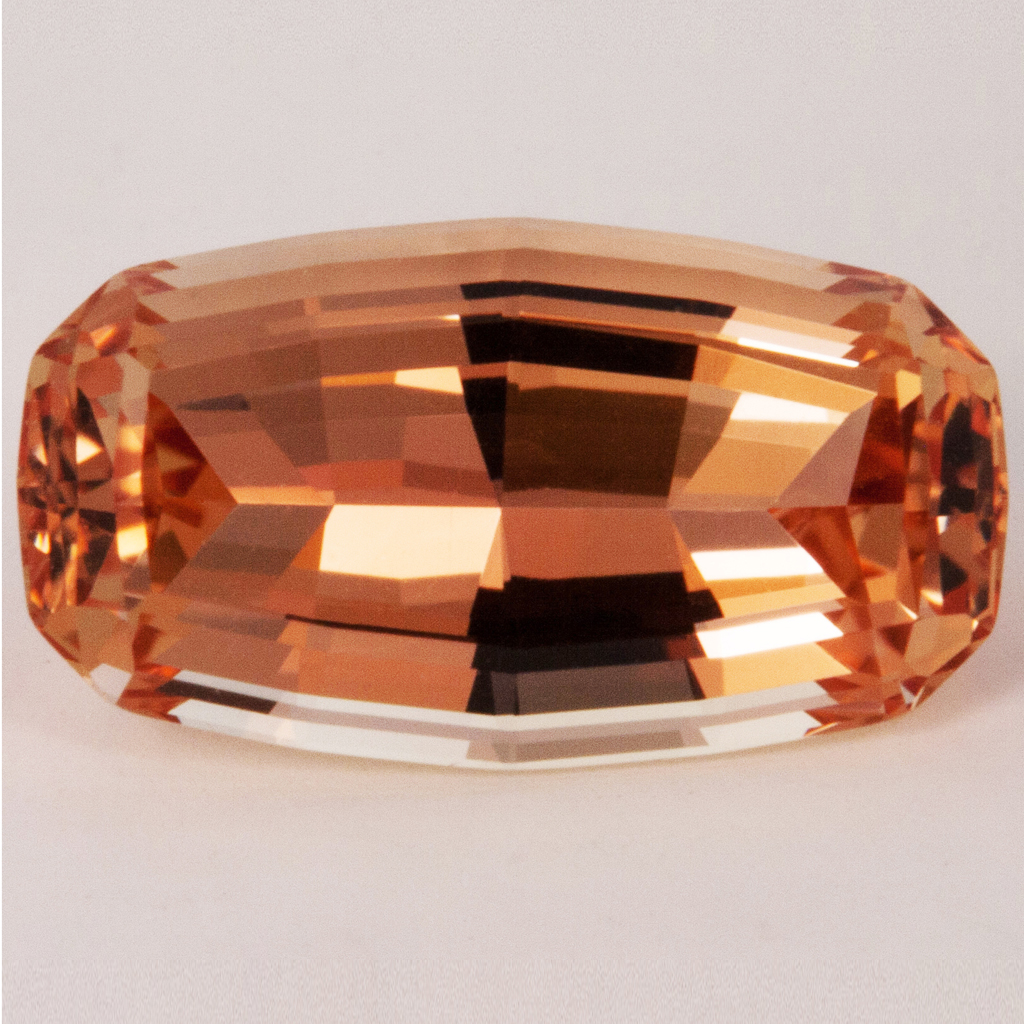
Come in and see our collection of loose topaz gemstones. We have a variety of colors on display.

Come in and see our collection of loose topaz gemstones. We have a variety of colors on display.
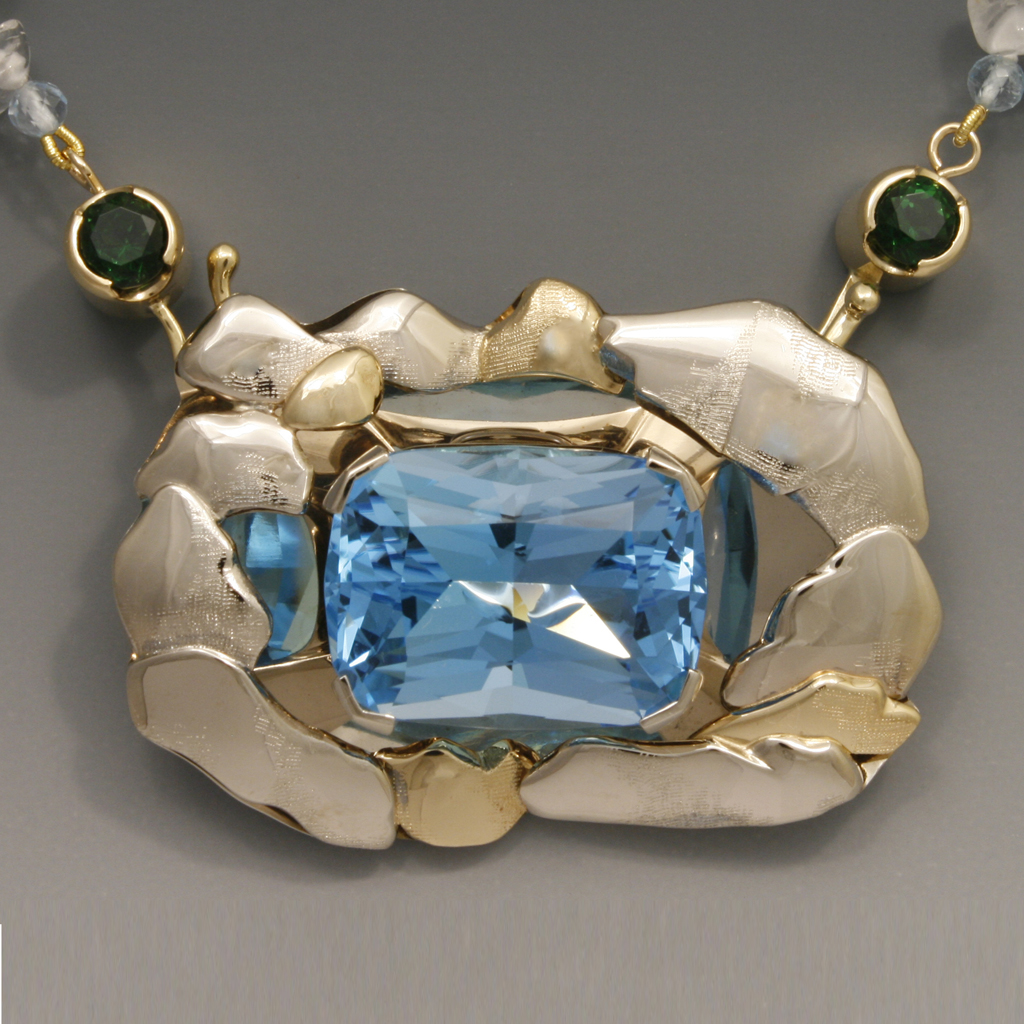
This pin/pendant was inspired by a swimming hole in the Berkshires. Blue topaz is set into a highly polished 18K white gold concave background to achieve the look of water. The “rocks” are created in 18K yellow and white gold, enhanced by aline graved texture. The necklace is made of crystal and blue topaz beads with bezel set Chrome Tourmalines and “S” hooks to attach to the piece or to each other in order to wear alone. Designed and created by Laurie Donovan.
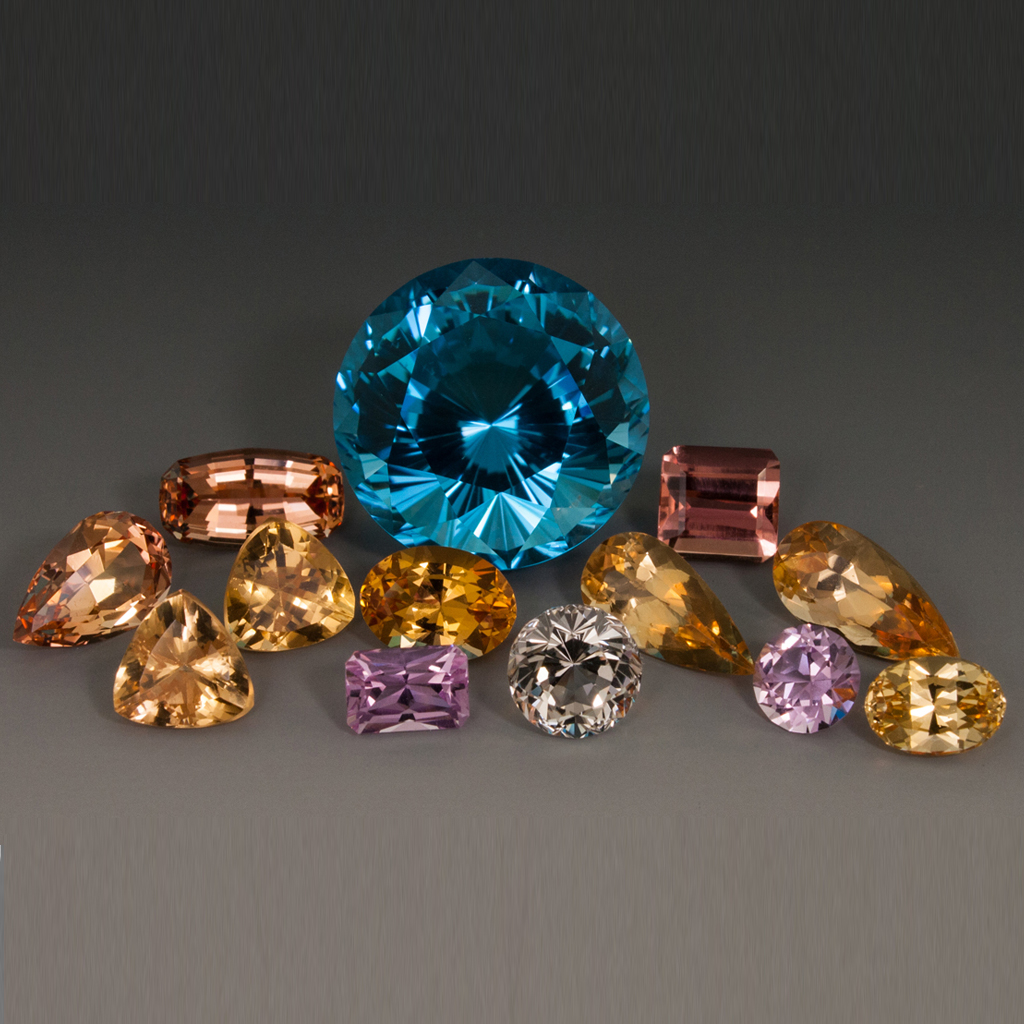
Topaz is November’s birthstone. It’s also an ideal gemstone for custom-designed jewelry given its brilliantly diverse colors and its hardness.
The name topaz comes from the Sanskrit word “tapaz”, meaning “heat” or “fire”. In ancient times, the Greeks believed that those who wore topaz possessed strength and invisibility. The Romans believed it improved eyesight. The Egyptians believed it protected against injury. During the Middle Ages, topaz was believed to be a healer of both physical and mental sicknesses and even able to prevent death.
In its natural state, topaz is golden brown to yellow. A variety of impurities and treatments may make topaz wine red, pale grey, reddish-orange, pale green or pink (rare) and opaque to translucent and even transparent.
The most sought after and consequently more valuable natural topaz is Imperial Topaz, alson known as “precious topaz”. The color of the setting sun (pink or pink-orange), the name arose with the Russian tsars of the 17th century who claimed their right to all the pink topaz mined in the Urals. The czars might take exception to the fact that today it’s the gemstone of Utah. They would also have to share mining locations with Brazil, one of the world’s largest producers of topaz.
Topaz is also the gemstone of another state, Texas, where it is found in the Precambrian granite of Macon County. For Texas, it’s blue topaz. Naturally occurring blue topaz is considered rare. Typically, to achieve blue, colorless, grey or pale yellow topaz is heat-treated.
Another topaz you might have heard of is Mystic Topaz. It is a colorless topaz artificially coated using a vapor deposition process to render a rainbow effect.
Topaz is 8 on the Mohs hardness scale. Given its relatively low index of refraction, do not expect large-faceted topaz to sparkle as readily as a diamond. Do expect it to be durable and lasting.
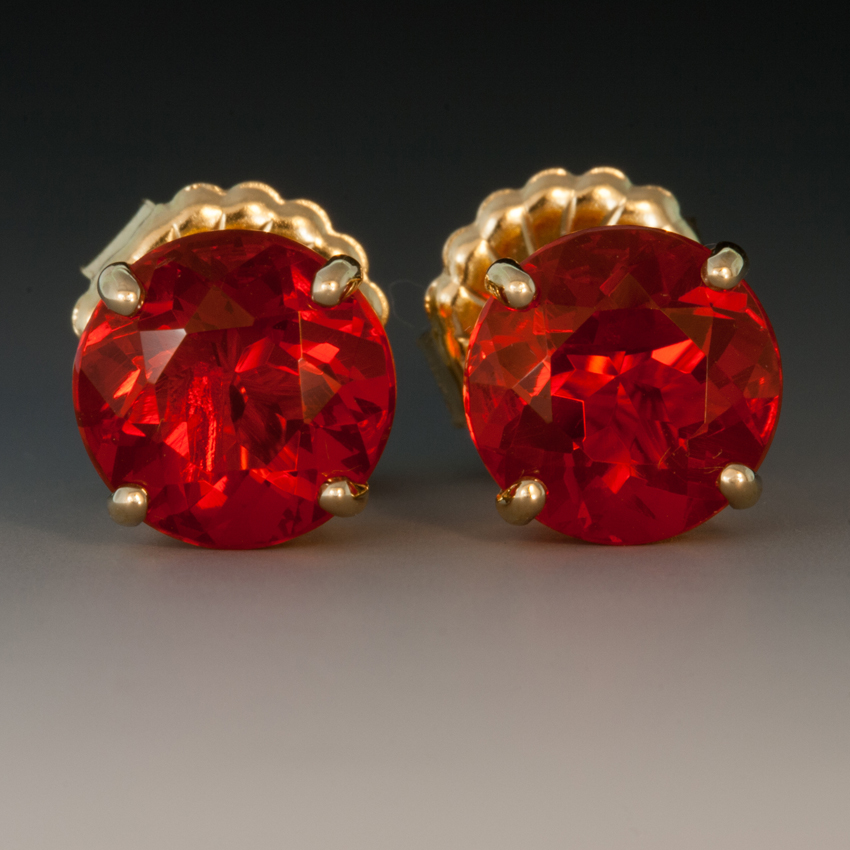
Mexican Fire Opal is a type of crystal opal that shows magnificant flashes of red/orange color. Unlike most opals, fire opal is usually faceted so that you get sparkle in addition to vibrant color. Fire opal was born in fire in the ancient volcanoes of Mexico. It forms when water seeps into silica-rich lava, filling seams and hollows. Under heat and pressure, the silica forms a solid gel that traps the remaining water within its structure. Fire opal that displays play-of-color is rare because volcanic opal forms relatively quickly and the spheres of silica rarely have time to settle into the diffraction grids that create play-of-color.
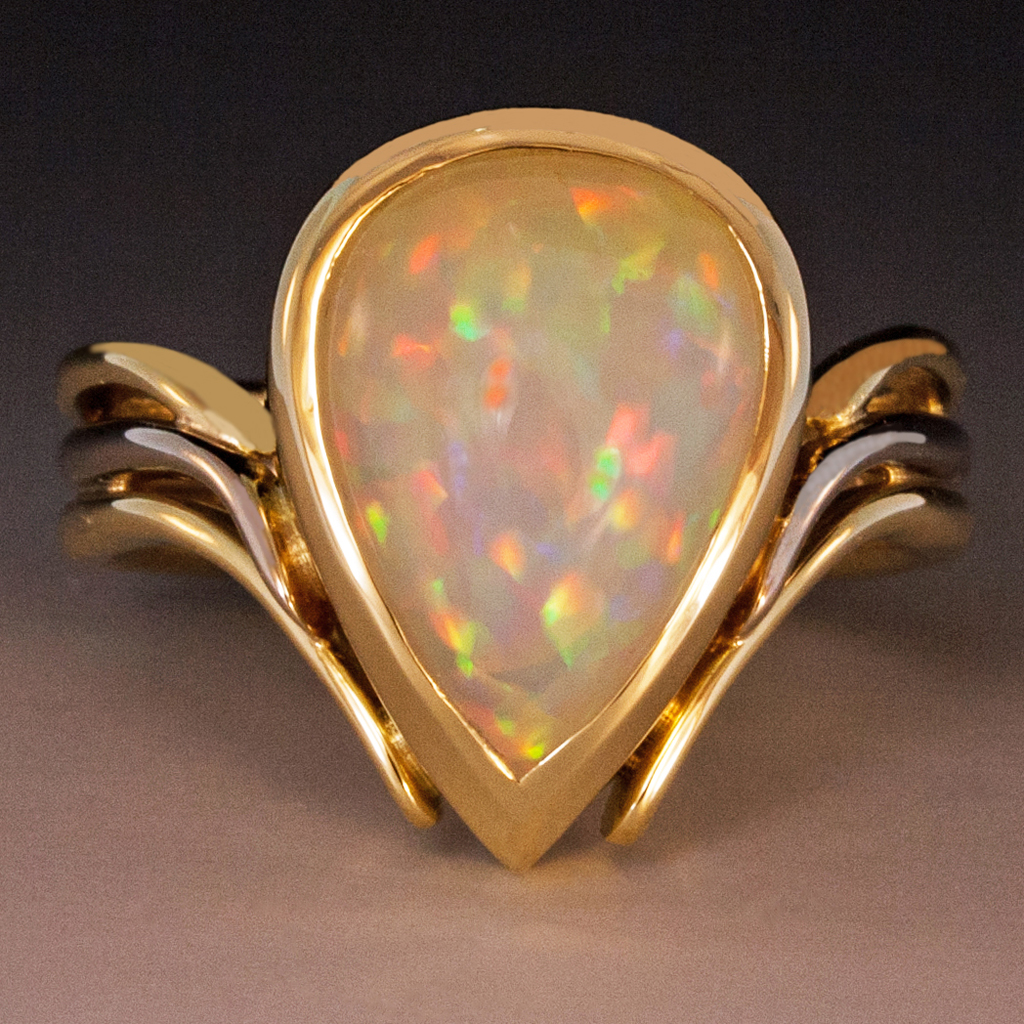
Ethiopian opals originate from volcanic activity. All volcanic opal is called “hydrophane opal.” The term hydrophane comes from the Greek words meaning “water-loving” and describes their ability to absorb water and change from opaque or semi-translucent to translucent or transparent. Sometimes this highlights the color play – other times the opal will become transparent or opaque, with no color when hydrated. The color returns when the gem dries out.
It is important that you handle and clean your opal jewelry with care. Never use a steamer or ultrasonic, keep away from harsh temperatures or sudden temperature changes. Simply wipe your opal jewelry with a clean soft cloth.
The opal is a favorite gemstone of mine given its wide palette of colors, shapes and versatility in jewelry. I’ve created many pieces of opal jewelry over my 40-year career as a fine goldsmith. It also explains why we pride ourselves on having a wide selection of loose opals available to collectors and for custom jewelry orders.
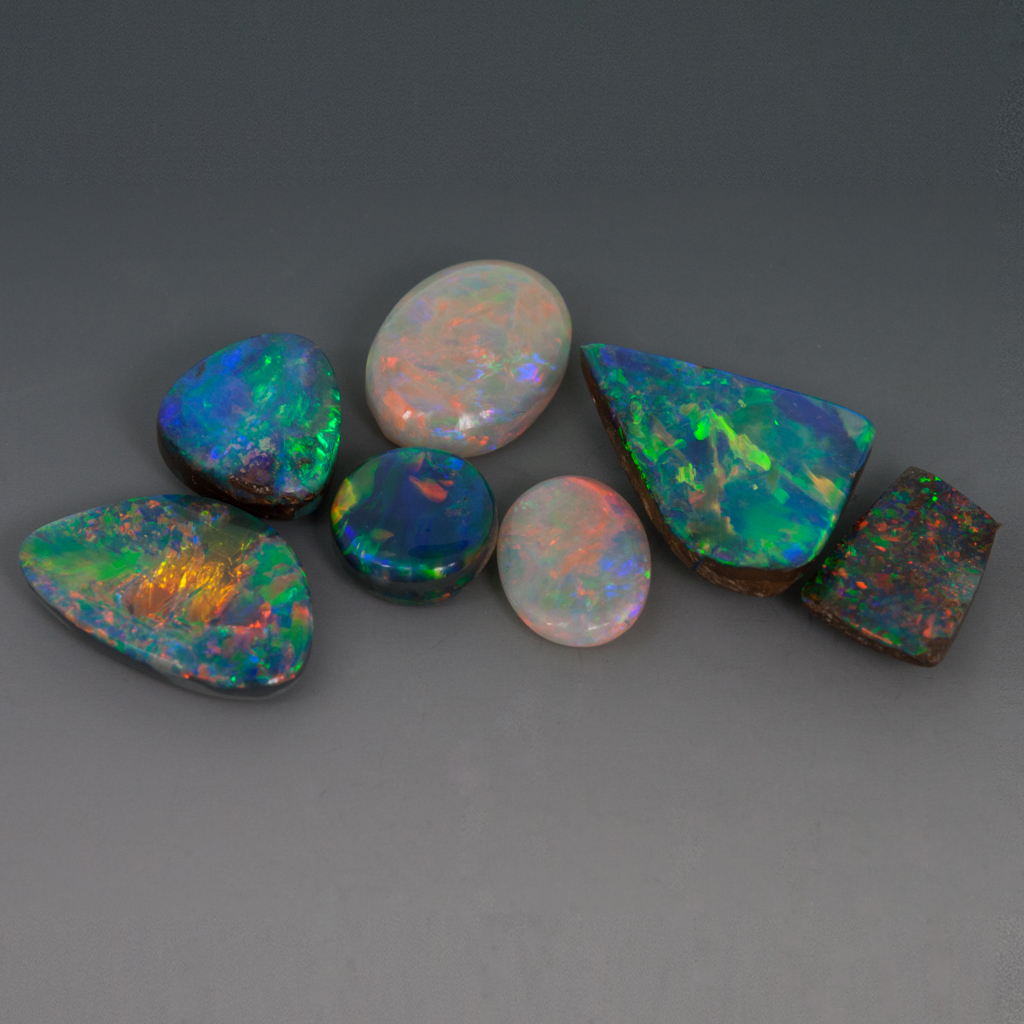
“The Romans established opal as a precious gemstone, obtaining their supplies from traders in the Middle East. The early Greeks believed the opal bestowed powers of foresight and prophecy upon its owner. In Arabian folklore, it is said that the stone fell from heaven in flashes of lightening.” (Opals Down Under)
Opal has a hardness of 5.5 – 6.5 on the Mohs scale, so it is more delicate, cabable of being scratched and its surface worn down. Opal rings are beautiful but should be worn with care. Opals make exculsive jewelry pieces because no two opals are alike. Finding a matched pair of opals for earrings is a challenge. When it does happen it is called a “split”.
The opal is a hydrated amorphous form of silica. As such, its water content may range from 3 to 21% by weight, but is usually between 6 and 10%. The internal structure of precious opal makes it diffract light. Depending.on the conditions in which it formed, it can take on many colors. Black opals are the rarest, white and greens are the most common. Opal is the national gemsotne of Australia.
Gem opals can be classified into four groups, light, dark, boulder, and black.
Light Opal, the most common, has a translucent milky to opaque white background. Crystal Opal is transparent to translucent.
Fire Opal, a type of crystal opal, is reddish orange to red, is normally translucent to semi-translcent, and is found in Mexico and Ethiopia.
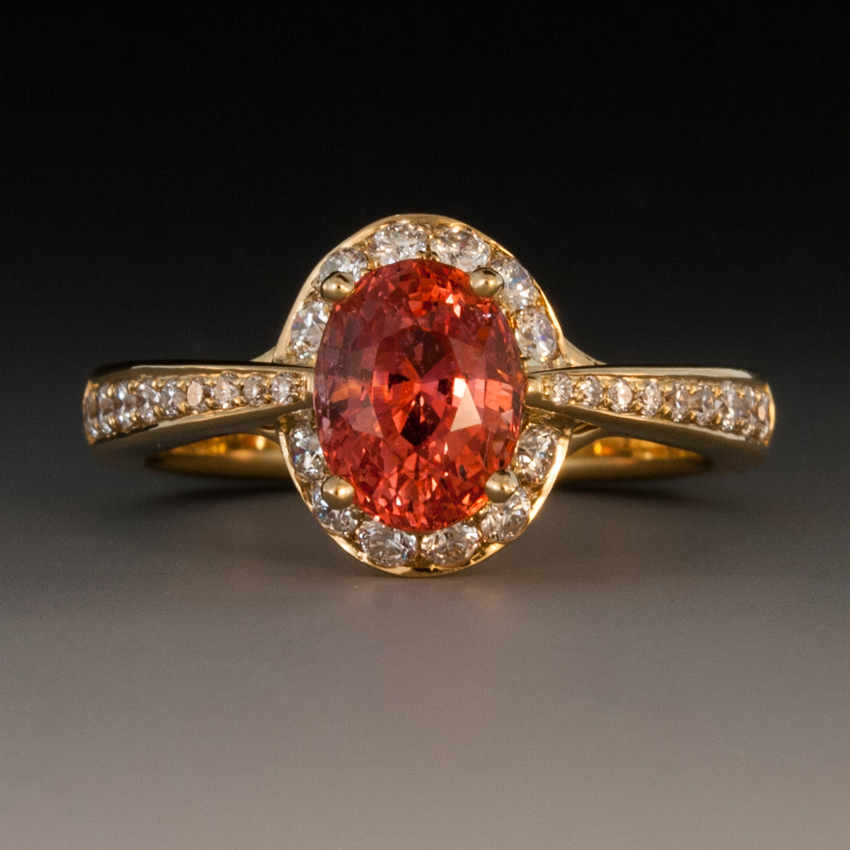
Padparadscha Sapphire Ring with Diamonds, 18KY.
Sapphire is the perfect engagement ring stone because of it’s hardness. Our hand made jewelry is also made to last a life time.
Padparadscha is the rarest type of Sapphire. The word means “The color of the lotus”. Sapphire is a wonderful ring gemstone because it has a hardness of 9 on the Mohs scale making it less susceptible to damage than any other gem except diamond. And it comes in every color of the rainbow except red when it is considered ruby. We have a large collection of sapphire jewelry and loose sapphire gemstones available for purchase in our gallery or our online store.
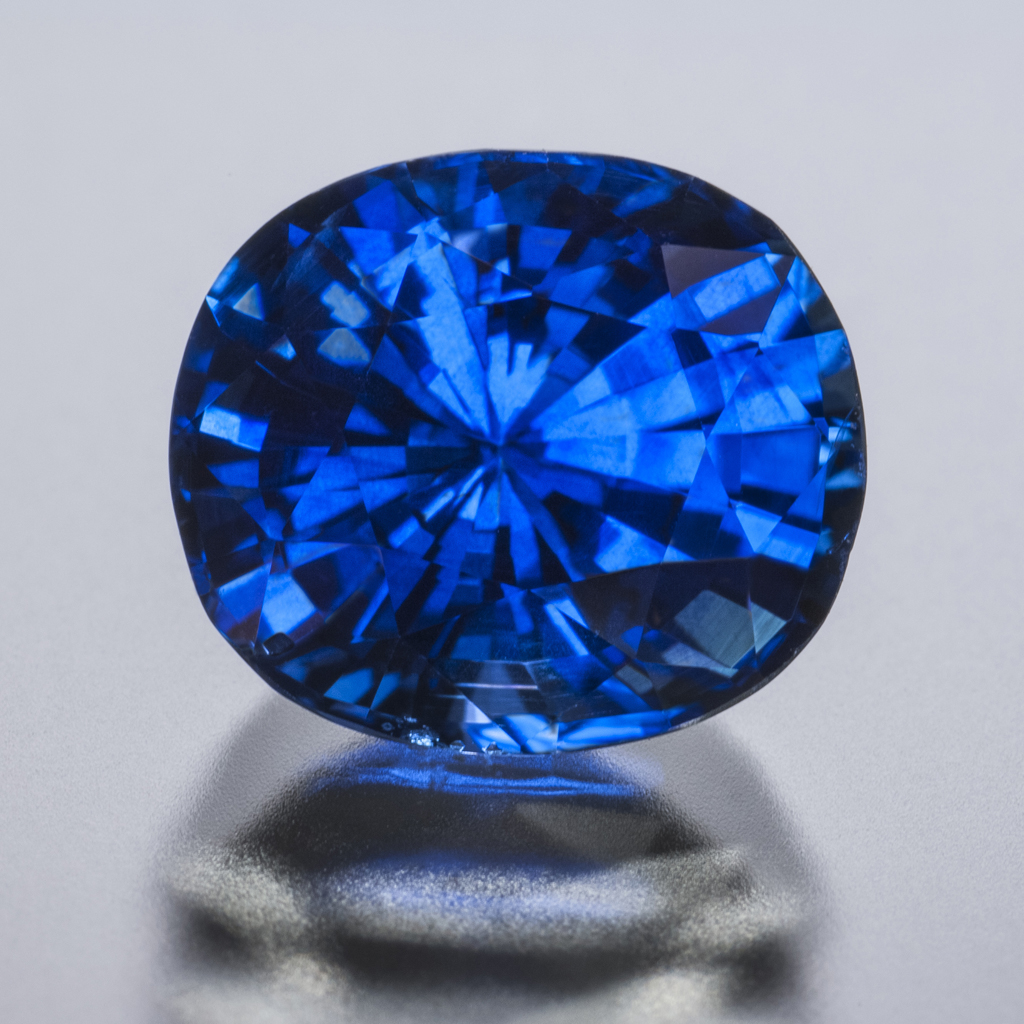
Blue Sapphire, 2.96 carat.
If your birthday falls in September, you are one of the lucky ones who can claim Sapphire as their birthstone. It is also the gem of the 45th wedding anniversary.
Sapphire is typically blue in color, but natural “fancy” or “parti colored” sapphires occur in yellow, purple, orange, green, and brown, Sapphires may also be black, gray, and colorless. The pinkish orange variety of sapphire is called Padparadscha.The only color which sapphire cannot be is red, which would make it a ruby.
Sapphire is 9 on the Mohs hardness scale making it (corundum) the third hardest mineral, after diamond (10) and moissanite (9.5). Why does this hardness matter? Because your sapphire will not scratch as easily as other gemstones, it makes sapphires perfect for ring stones, especially engagement rings.
Sapphire is found in Eastern Australia, Thailand, Sri Lanka, China (Shandong), Madagascar, East Africa, and in a few locations in North America, mostly Montana. Sapphire and ruby are often found in the same geological setting. Our sapphires come from these locations.
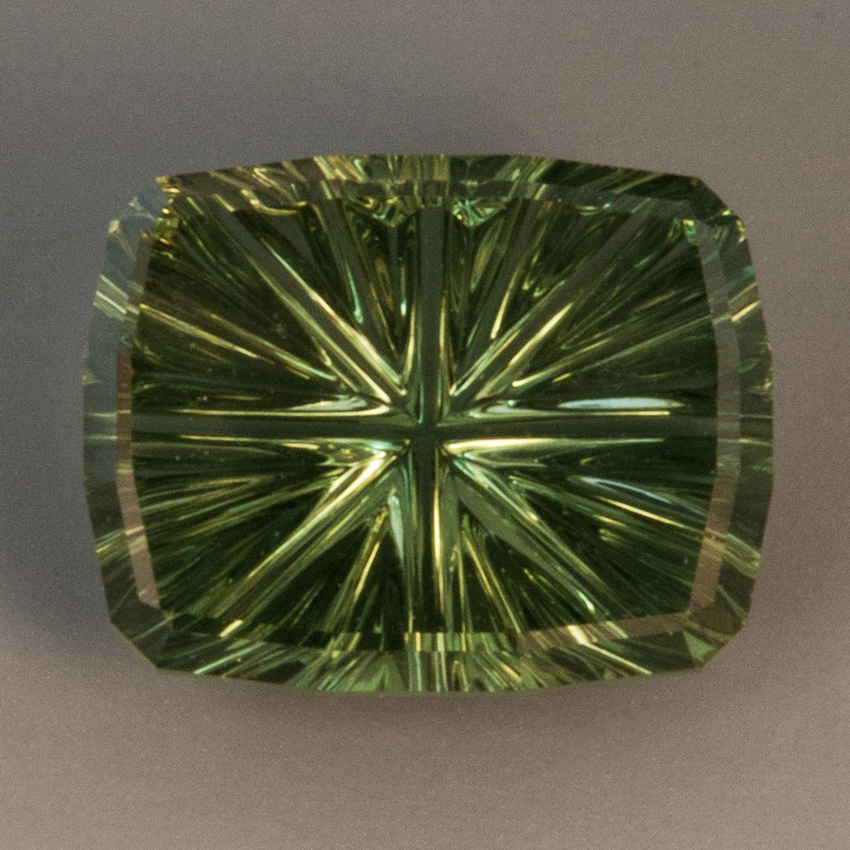
Loose Colored Gemstones are Art.
This Green Sapphire is a Fantasy Cut Gem Carving by Cutting Edge Award winning gem cutter John Dyer. It would make a beautiful engagement ring flanked with two trillion cut diamonds!
The trend of innovative gem cutting began in both Europe and America, and many attribute it to a German cutter named Bernd Munsteiner (b. 1943). He began in Idar-Oberstein, a region of Germany that has been famous for over 500 years for its tradition of fine gem cutting. Munsteiner’s style was geometric, abstract and thoroughly modernist. He would leave parts of a gem raw and unpolished to produce a stark contrast with the cut and polished sections. Often he would cut and facet only the back of the gem, making the design appear to be embedded in the gemstone. Sometimes he would integrate inclusions into the design.
The gem cutting establishment in Idar-Oberstein rejected his work but international critics were enthusiastic and Munsteiner went on to receive many international awards. Following the introduction of “Fantasy Cut” gemstones by Munsteiner in the 70’s, many lapidary artists have begun producing this style of gem cutting art. Bernd’s son Tom continues this tradition along with many other lapidary artists, some of whom are represented in our gallery. Other Cutting Edge lapidaries in our gallery include Larry Winn, Steve Walters, Michael Dyber, and John Dyer.
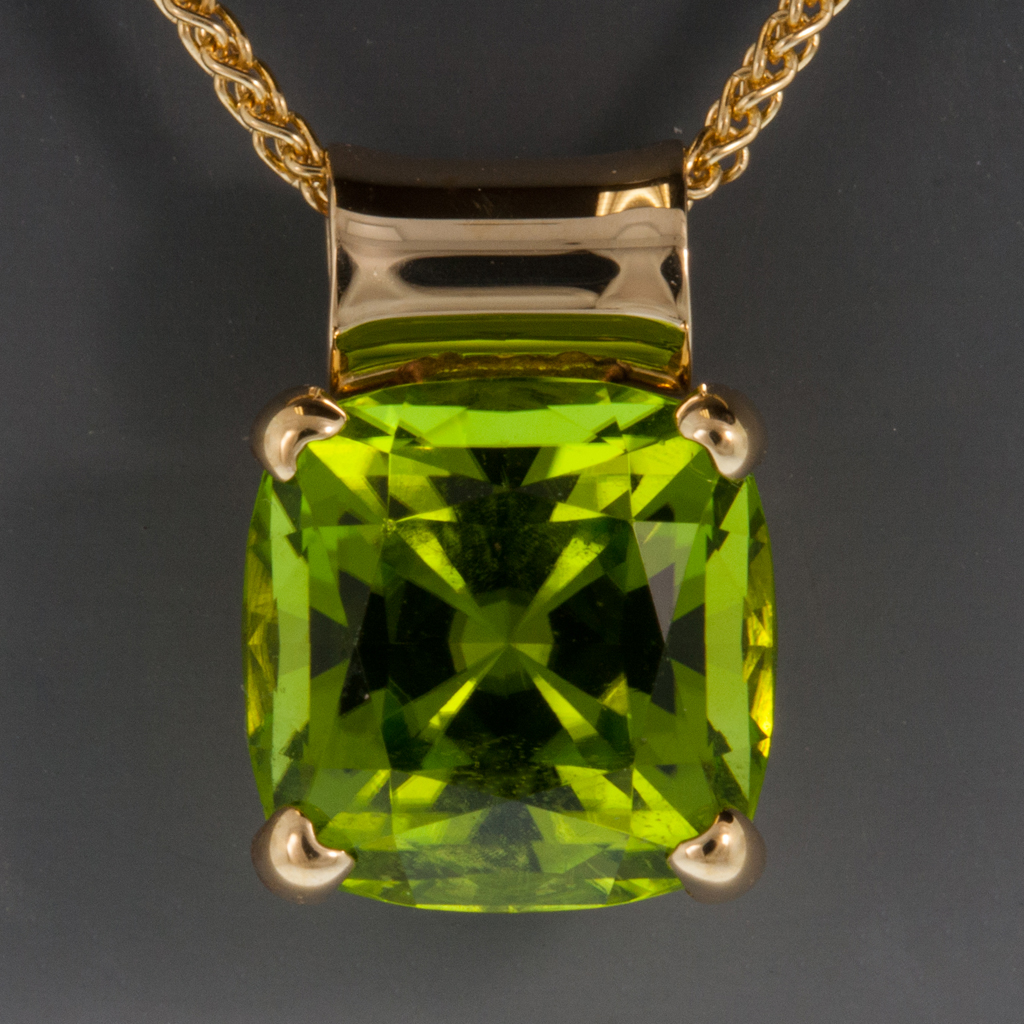
Peridot jewelry is the perfect gift for the August woman. Especially when it’s “her” color. Our loose peridot, cut locally in the Berkshires, have very good clarity and a deep lime green color. We have several pieces of peridot jewelry on display in our gallery and on this site. Watch our video below to see more peridot jewelry and loose peridot gemstones.